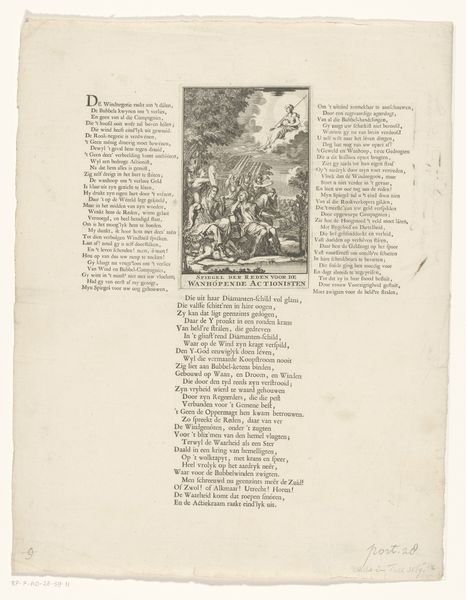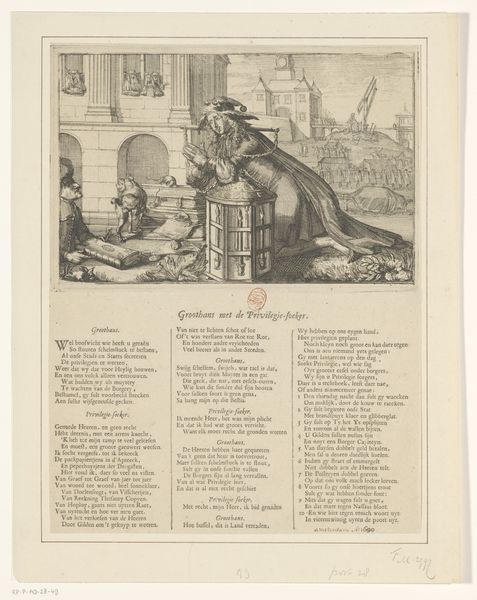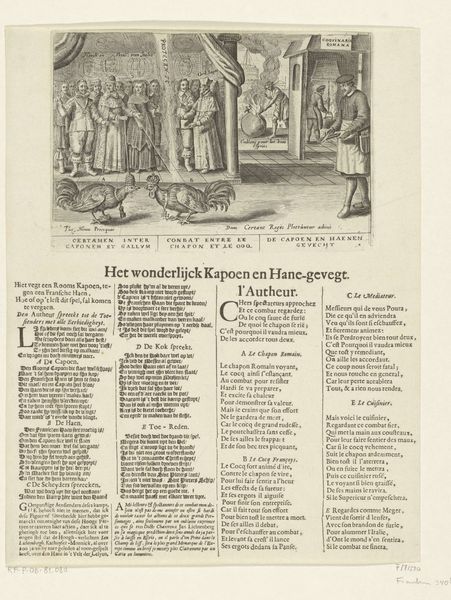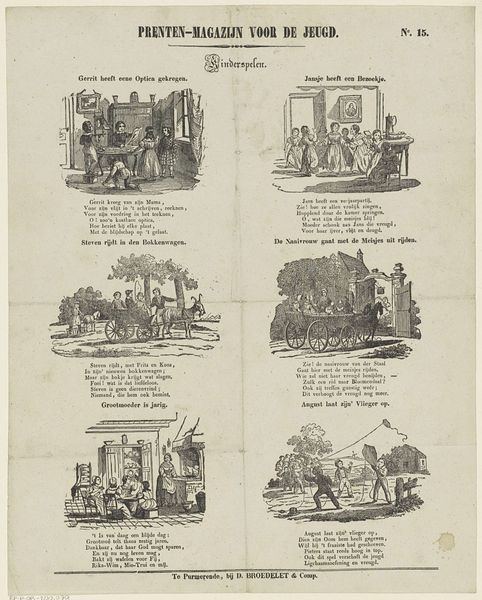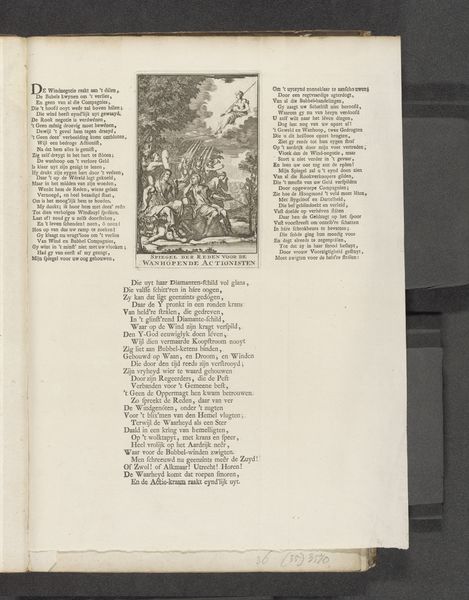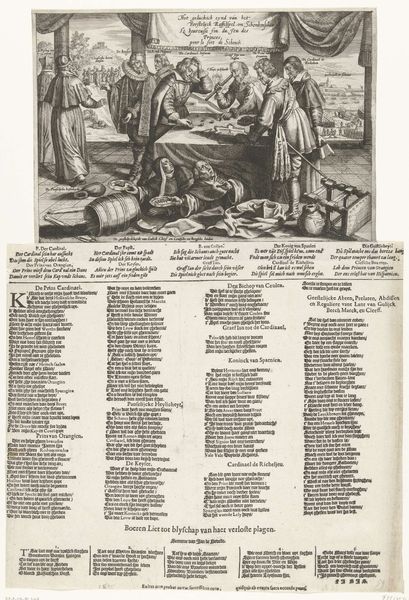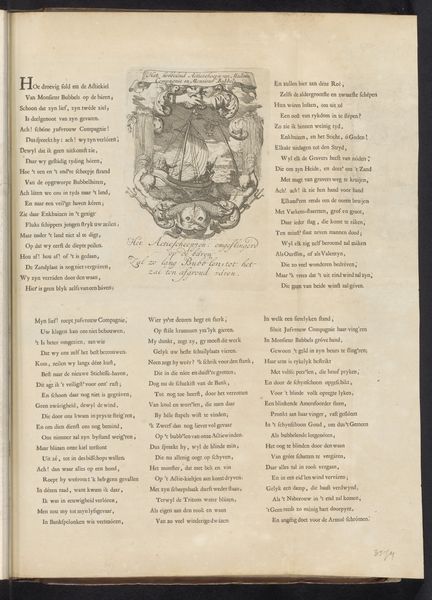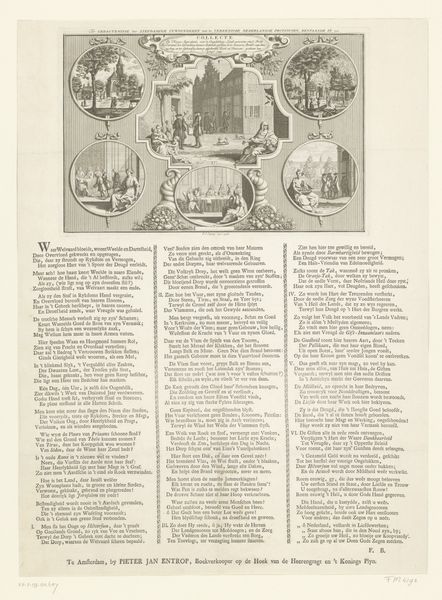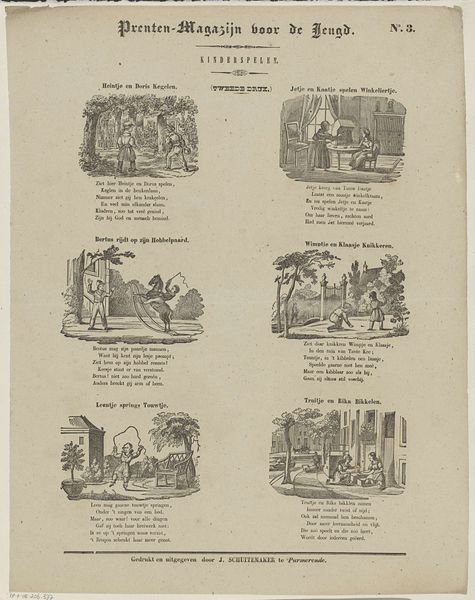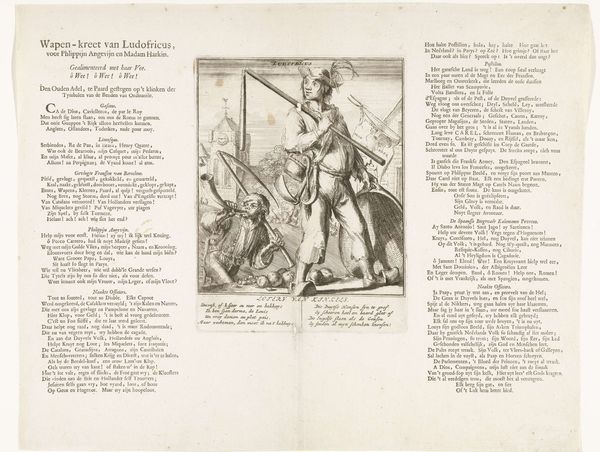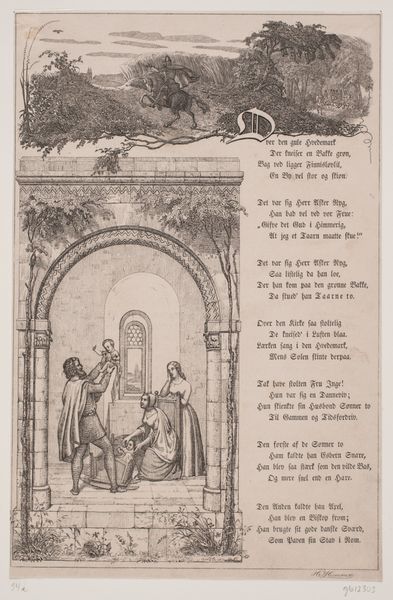
print, paper, engraving
#
narrative-art
#
baroque
#
dutch-golden-age
# print
#
landscape
#
figuration
#
paper
#
line
#
history-painting
#
engraving
Dimensions: height 413 mm, width 317 mm, height 117 mm, width 177 mm
Copyright: Rijks Museum: Open Domain
This print, made in Amsterdam by Abraham Borckholt in 1686, presents a tableau vivant, composed of stark contrasts in tone and texture. The composition divides into distinct zones: above, we have text; at center are two men flanking a lion, and below, more text. The figures display a tension between realism and allegory. The lines are sharp, almost clinical, yet the scene suggests a deeper symbolic narrative. The gaze is drawn not to the literal depiction, but towards what these elements might represent. What semiotic codes are at play here? The two men embody different paths, perhaps diverging interpretations of faith, morality, or life itself. And the lion, lying passively between them – is it strength, weakness, or perhaps a symbol of something that keeps these opposing forces in balance? The materiality of printmaking allows for crisp lines, enabling an exploration of contrasting textures. This functions not just aesthetically but also as part of a larger philosophical discourse about choice, representation, and meaning.
Comments
No comments
Be the first to comment and join the conversation on the ultimate creative platform.
